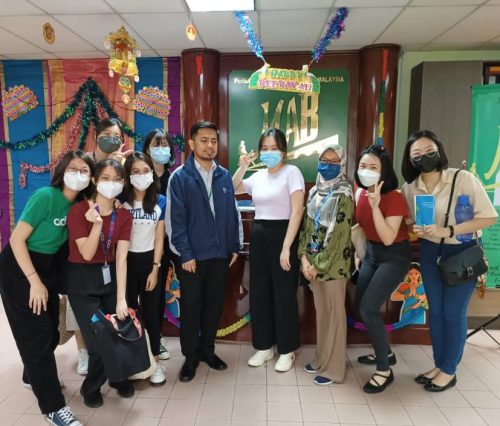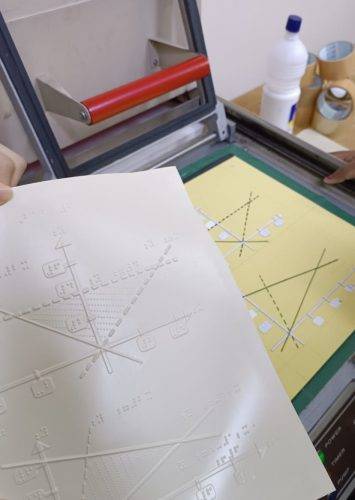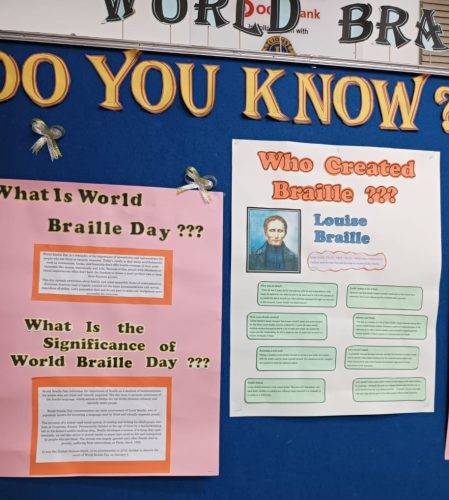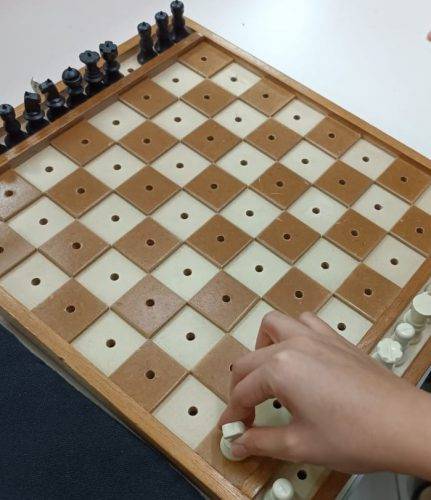On 5 October 2022, we (IMU Nursing students) went for a field visit to the blind centre. Upon reaching our destination, we received a briefing from a staff member who, regrettably, lost his sight shortly after newly enrolling into college in 2006 due to a late diagnosis of glaucoma, which eventually led to blindness. He recounted his experience of how his vision was impacted and explained how he overcame this significant obstacle in his life.
From his sharing, he initially struggled to focus his vision and has now gradually progressed to cloudy vision where everything he sees is like looking into a fog. At the beginning, he used a duration of 3 months to learn basic Braille to read texts and messages.
In order to adapt into his new lifestyle, he has then transformed his handphone with a specially designed setting for blind people on the phone where each item he pressed on will have a background sound to direct him to the right way. He even watched Netflix where there is a narrative that describe the movie scene and characters featured to him.

I am amazed and at the same time, am of the opinion that the modern advanced technology nowadays has provided numerous accessibility options to the blind where they, as a human, can lead lives that closely resemble those of others.
Besides, we also went to the embosser operation room where all Braille documents, books and references are processed and printed. One of the staff with vision impairment showed us how they use a general keyboard to type in Braille language on the computer. Each keystroke on the keyboard appears intricate to us, as they were being input in Braille. I’m impressed by all the efforts they have made in the past as everything seems different as compared to our lifestyle. I couldn’t imagine if I were in their situation what I would do as adapting to such a new journey would be challenging.
Similar to us, as students, they engage in diverse subjects across various grades, such as Mathematics, Sciences attached with diagrams in Braille, English etc. The higher the grade, the simplest form of Braille will be used. According to the staff, all printed books will be distributed at no cost to all the blind people around Malaysia. Each of these books is securely bound with thick, distinctively textured paper that differs from standard paper. Additionally, there is another glossy and silky material utilised to emboss diagrams illustrating human anatomy and physiology. These papers can be reused up to three times which I think is very eco-friendly.

Moving on to their library, each of the books were embossed with Braille and on the wall, there were some information about the creator of Braille, Louis Braille. Furthermore, I was astonished to discover that Braille employs various codes tailored to different countries, including Thailand, Indonesia, France, and more.

Subsequently, the staff also acquainted us with a Braille watch and a sound-equipped weighing machine, along with a range of activities they can engage in, such as chess and snake board games. Noteworthy as well, the library is equipped with several recording rooms where we can volunteer as storytellers for the visually impaired.

Overall, I think this field trip has afforded me valuable insights into the ways in which the visually impaired cope at the blind center. Through this visit, I have learned and know more about blind people and the things that they could do on a daily basis such as watching Netflix as well as replying to emails. Technologies has enabled them to perform their lifestyle as usual and I wish in the future, there will be more to come to eliminate their limitations.
Written by Liew Jie Ne
Reviewed by Siti Hajar Ali, Dr Lim Swee Geok


No approved comments.